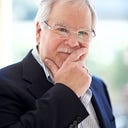100 Years of the Most Populous Countries — Animation
All investors and those interested in economics should study demographics, or the changing composition of population over time.
This animation, which covers the change in populations over 100 years for the most populous countries, is a good starting place.
Courtesy of: Visual Capitalist Original graphic by: Aron Strandberg
Some interesting points:
Visual Capitalist who featured this graphic point out that by about the year 2000, all European countries dropped out of the rankings.
At the beginning of the animation, the United Kingdom, Germany, France, and Italy were all there.
Birth rates have declined to the lowest in the world, which establishes immigration as the only potential option for economic growth.
Germany, in particular, faces a crucial demographic cliff.
Another major point of interest is the changing demographics of China.
In the next decade or so, China’s population will stop growing altogether — and then it will start shrinking.
This is the predictable aftermath of China’s one-child policy for many decades. [adrotate group=”8"]
The country still has a giant portion of the population that will continue to move up the ladder economically, but we will be looking at what these circumstances could mean as they loom closer.
Lastly, the rise of India and Nigeria can’t be understated in importance.
Both are home to the fastest growing cities in the world.
Nigeria will pass the U.S. to become the third largest country in the world by population in the coming decades, and India could be the world’s next China.
We’re living in interesting times, aren’t we?
Originally published at Property Update -.
